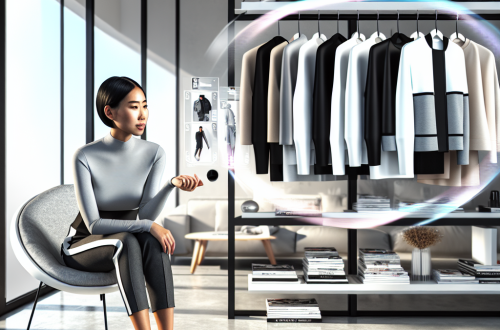The Rise of Male Beauty Influencers: Breaking Stereotypes in the Beauty Industry
The beauty industry, traditionally dominated by female icons and a female-oriented market, is currently witnessing a transformative shift. This change is characterized by the rise of male beauty influencers who are redefining norms and breaking down gender stereotypes. Their increasing visibility and acceptance highlight a broader societal shift towards inclusivity and diversity in beauty standards.
The Emergence of Male Beauty Influencers
The last decade has seen a significant increase in the visibility of male beauty influencers. With the help of social media platforms like YouTube, Instagram, and TikTok, these influencers have carved out a niche for themselves, offering makeup tutorials, skincare routines, and cosmetic reviews to audiences that span across gender boundaries.
Pioneers in the Field
One of the first to break through was Patrick Starr, who became well-known for his elaborate makeup tutorials and collaborations with major cosmetics brands. Following in his footsteps, influencers like James Charles and Manny MUA have not only amassed a substantial following but have also launched their own makeup collections. These influencers have opened doors for many others, proving that makeup is not confined by gender.
Breaking Gender Stereotypes
The rise of male beauty influencers is a direct challenge to the long-standing gender stereotypes in the beauty industry. Traditionally, makeup has been marketed primarily to women, and the idea of men using makeup has been stigmatized. However, male beauty influencers are changing these perceptions by normalizing men’s makeup usage.
Impact on Social Perceptions
By showcasing their makeup skills and knowledge, male beauty influencers are contributing to a more inclusive understanding of beauty. They are helping to dilute the stigma around men wearing makeup, showing that it’s a form of personal expression rather than a gender-specific obligation. This shift is significant in promoting gender neutrality and reducing the pressure on individuals to conform to traditional gender roles.
Marketing and Economic Impact
The influence of male beauty influencers extends beyond changing societal norms; it has tangible effects on the beauty market and marketing strategies.
Influence on Product Lines
Brands are increasingly acknowledging the buying power and influence of male beauty enthusiasts. This acknowledgment is reflected in broader, more gender-neutral product lines and marketing campaigns. For example, companies like CoverGirl and Maybelline have featured male ambassadors, signaling a shift towards more inclusive advertising strategies.
Economic Benefits
The engagement of men in the beauty conversation has expanded the market. Brands that embrace this inclusivity benefit from access to a broader audience, increasing their potential customer base and, subsequently, their revenue. The success stories of male-launched beauty brands, such as Jeffree Star Cosmetics, illustrate the economic potential of inclusive beauty products.
Challenges and Criticisms
Despite their success, male beauty influencers face unique challenges and criticisms. They encounter backlash and negative comments, not only from traditionalists within their own gender but also from those who accuse them of encroaching on a predominantly female space.
Navigating Backlash
Many male beauty influencers have shared experiences of receiving homophobic and sexist comments. This backlash is a reflection of the pervasive stereotypes and societal norms that they are challenging. Handling such negativity requires resilience and often, a supportive community that backs their efforts to redefine norms.
Accusations of Space Encroachment
Some critics argue that male influencers in the beauty space may overshadow the achievements and visibility of female influencers. While it is essential to recognize and address any imbalance, the broader movement towards inclusivity in the beauty industry suggests a shift towards equal recognition for all, irrespective of gender.
Future Prospects
The trajectory of the beauty industry suggests a continuing rise in the influence of male beauty influencers. This trend is supported by a younger, more open-minded demographic that values authenticity and diversity over traditional gender norms.
Continued Growth and Influence
As societal attitudes continue to evolve, the influence of male beauty influencers is likely to grow. This growth will further normalize men’s participation in beauty culture, encouraging more individuals to express themselves freely without fear of judgment.
Technological Advancements and Innovations
Emerging technologies and platforms will provide new opportunities for male beauty influencers to connect with their audiences. Innovations in virtual reality, augmented reality, and AI could revolutionize the way beauty products are marketed and experienced, offering fresh avenues for creativity and engagement.
In conclusion, the rise of male beauty influencers is not just a trend but a significant cultural shift in the beauty industry. By challenging traditional gender norms and promoting inclusivity, these influencers are not only expanding the market but are also playing a crucial role in shaping a more diverse and accepting society. As we look to the future, their continued influence will likely bring even more profound changes to both the industry and societal perceptions of beauty.


